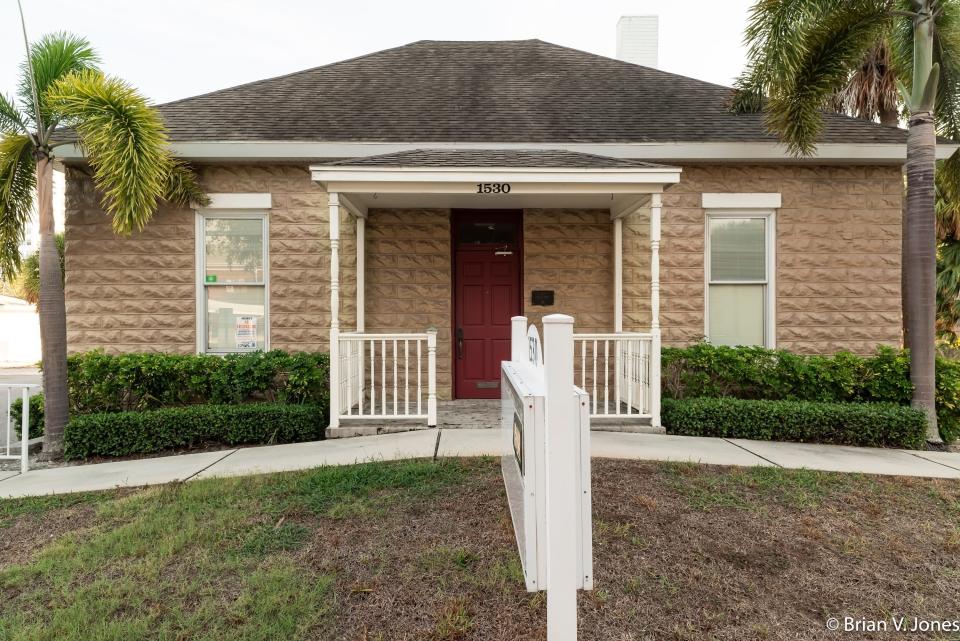Preserving Sarasota's old homes can protect our city's true character
Recently I’ve been in the process of a move that involves a significant downsizing of my living space. Of necessity, that means letting go of much of the heavy antique furniture passed down to me from my ancestors.
I grew up in an old house filled with old things. My mother, a descendent of New England stock, was drawn to early-American pieces and I gained an appreciation for the spare yet sturdy simplicity of the Shaker style. Our dining room chairs didn’t offer the posterior comfort of today’s padded versions, but they’ve now contributed to the good dining posture of several generations.

The value of old things lie in the stories they have to tell. The giant buffet in my dining room has slotted shelves to hold the vintage pewter spoons Americans used long before there was stainless steel. The roll top desk in my office has burn marks where some journalist let his cigarette rest too long while pondering the perfect word choice. My grandfather clock, which hasn’t told time for decades, still holds the memories of its chime and a yellowed index card written in my grandmother’s precise penmanship documenting its provenance back to the early 1800s.
With a heavy heart, I recently sent pictures and descriptions of these pieces to three area antique dealers, gauging their interest in buying or consigning them. One said that picking up, storing and trying to sell them wasn’t "worth our time for what they’d bring.” Another simply replied: “Not interested.” The third sent a note that praised these “lovely pieces” but then deemed them unmarketable because “nobody wants that brown stuff anymore.”
I concluded Sarasota must feel about vintage furniture the way it often feels about its period architecture: out with the old, in with the new. Our long history of not valuing history - be it actual structures or the stories of our community elders – is well documented.
But lately, there have been a few encouraging signs to the contrary.
Earlier this month, the Sarasota City Commission – following the 4-0 lead of the Historic Preservation Board – voted (unanimously!) to stay for six months the potential demolition of the historic McAlpin house, built in 1912 at 1530 Cross Street. The commission recommended Orange Pineapple LLC, which plans a mixed-use residential development for the roughly 3-acre parcel near Burns Court, use the time to consider how to incorporate the home into its design or continue to explore moving it.

More: A beloved fixture in downtown Sarasota since the 1950s will soon close
“We’ve come a long way,” said Erin DeFazio, program director of the Sarasota Alliance for Historic Preservation (SAHP). “The fact they continued it rather than approving the demolition demonstrated huge progress. They recognized it as a historic property with value to the community.”
Another promising sign comes in the form of the SAHP’s new historic loan program, which provide loans to homeowners in the Central Cocoanut and Newtown districts to protect the structural integrity of their homes’ exteriors and discourage them from selling out to developers. (The Central Cocoanut neighborhood is already a nationally designated “historic district” and the same designation is imminent for the nearly 700 contributing structures in the Newtown neighborhood.)
“It’s about putting money in the hands of those who need it to maintain their historic properties, so they don’t feel like they have to sell,” says DiFazio. “One of the goals is that it will slow the displacement of long-term residents in neighborhoods that are very vulnerable to large scale redevelopment, like we saw in the Rosemary District.”
Flexible, low-cost loans will be offered to low- and fixed-income homeowners who can’t qualify for traditional bank lending and will be coupled with hands-on support to choose a contractor who is skilled, affordable and familiar with maintaining preservation standards.
The loan payments, due only after the project is complete, will be amortized based on actual costs and spread out over eight years with flexible terms. Any participating property will be protected by covenant from demolition for 10 years.
The SAHP has just begun promoting the program and has yet to enlist its first homeowner. DiFazio says there are some reservations to overcome: Between recent hurricanes and the pandemic, predatory offers from insurance companies and roofers have made targeted homeowners wary. Overcoming residents’ hesitancy about borrowing money in the first place can also be a hurdle. But these affordable loans can not only help residents stay in their homes, but also establish a positive financial track record.
The SAHP – which raised more than $130,000 for the program from private donors, The 1771 Foundation and the Gulf Coast Community Foundation – has a modest goal of making three loans this first year. Eventually it hopes to expand the program to the Edgewood Historic District in Venice, which has also received national historic designation.
It’s all about “preserving more of the fabric of our historic neighborhoods and the stories that these buildings and neighborhoods have to tell,” DiFazio said.
“When it comes to large scale redevelopment, even if you just have one protected property in the middle of the block, it protects the whole block,” DiFazio said.
"It’s not the be-all and end-all answer to the teardowns and inappropriate infills we’ve seen, but the hope is to slow that down and keep these residential properties in the hands of the locals who are a part of our ongoing story.”
As someone who has spent her whole career listening to and documenting people’s stories, it’s reassuring to know others are also working to protect that historical legacy. Like a well-worn antique chair, burnished by countless bottoms, these are the stories that make Sarasota shine.
Meanwhile, I still have a house full of “that brown stuff” – with plenty of stories to tell and many more yet to write – that’s in search of a new home.
To learn about the SAHP’s historic loan program, call 941-529-1833, write preservesrq@gmail.com or go to preservesrq.org.
Contact Carrie Seidman at carrie.seidman@gmail.com or 505-238-0392.
This article originally appeared on Sarasota Herald-Tribune: Sarasota can save old homes - and its unique character, too
